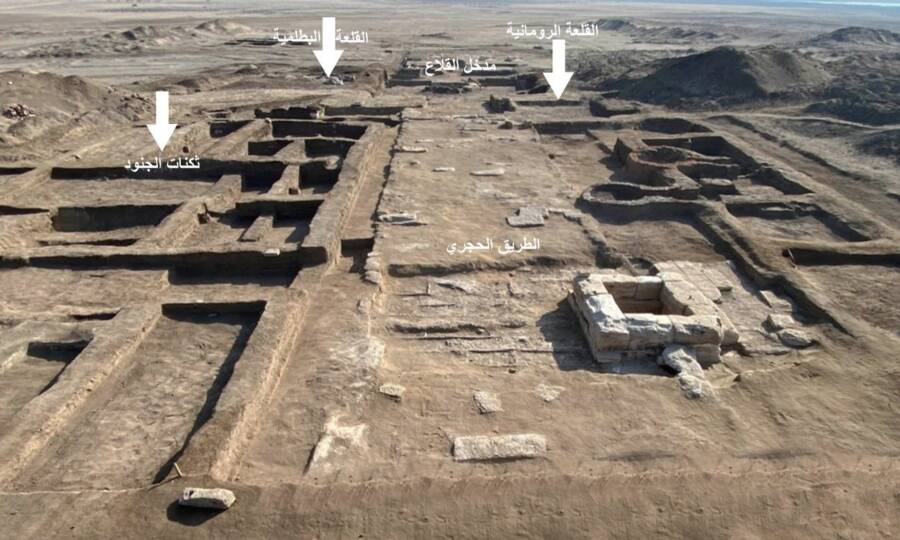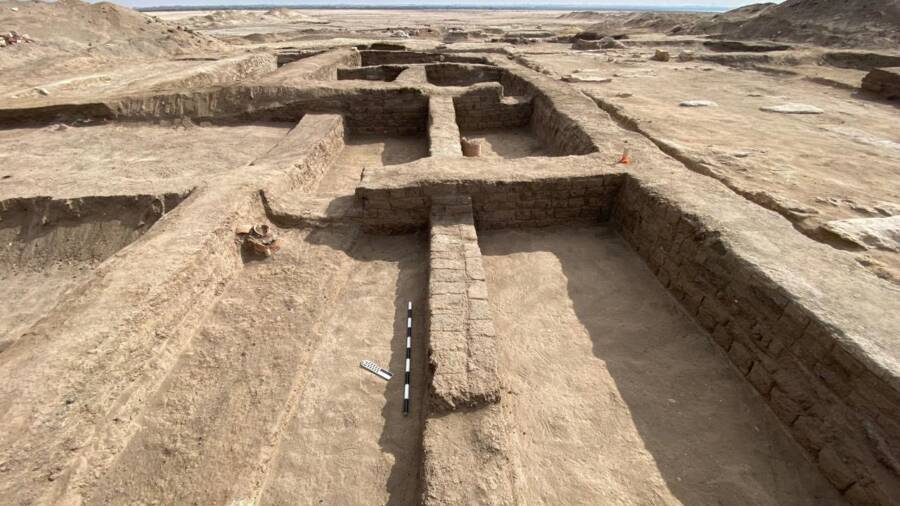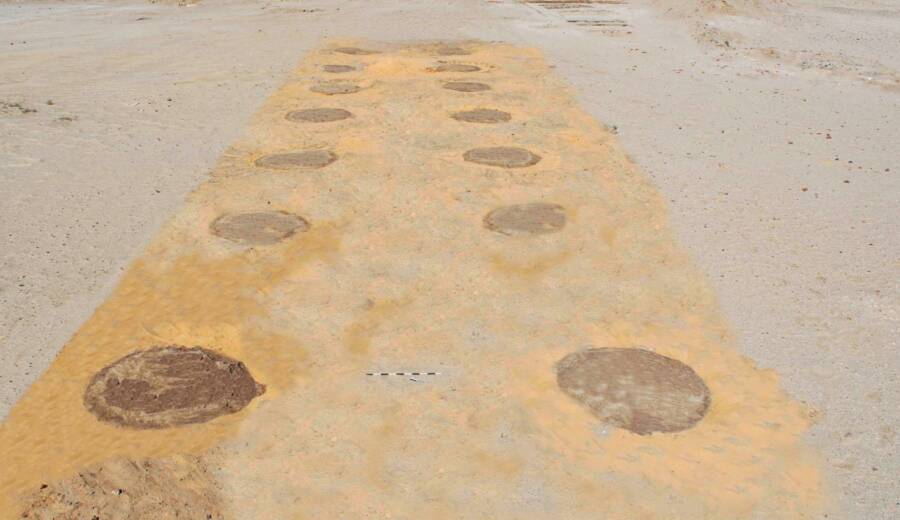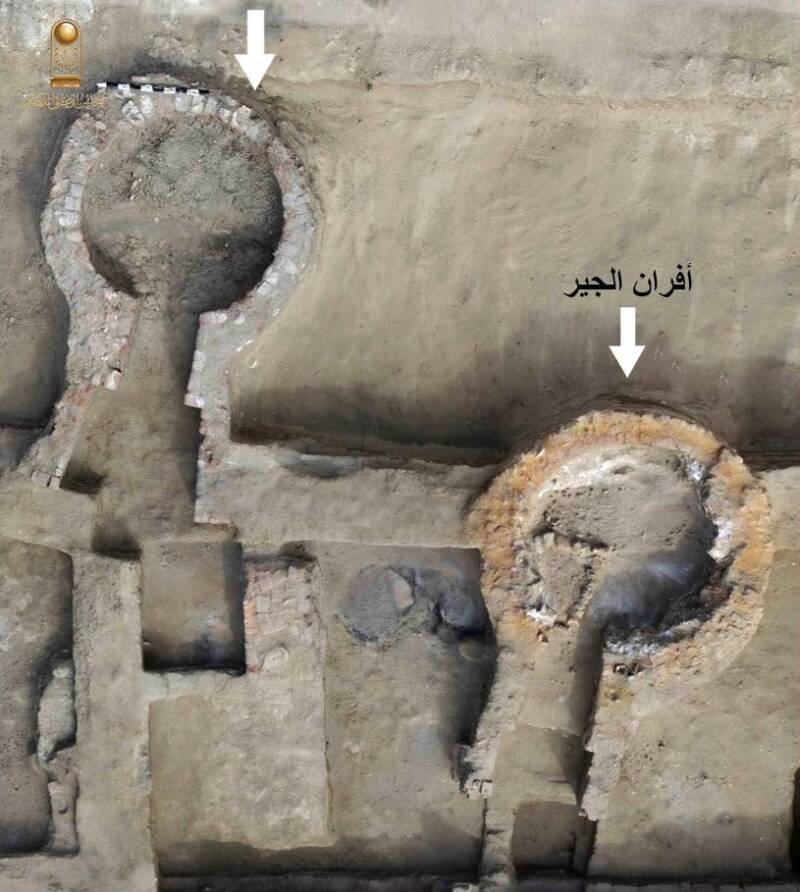Researchers working at Tell Abu Saifi in the Sinai Desert also uncovered soldiers' quarters, a 328-foot road, and four massive kilns used for making lime.

Egyptian Ministry of Tourism and AntiquitiesAn overview of the excavation sites at the “Fortress of the East” in the Sinai Desert.
New archaeological excavations in the northern Sinai Desert have revealed previously hidden secrets about ancient Egypt’s so-called “Fortress of the East.” Archaeologists have found the remains of military fortifications, residential units, and a ditch that could indicate the presence of another fortress in the region.
The most fascinating discovery, however, was that the fortress once featured an impressive limestone road leading to its entrance, along which more than 500 trees had been planted in massive clay pots. While the existence of the fortress has been known for decades, these new findings shed light on what life was like for soldiers stationed there more than 2,000 years ago.
New Discoveries At Egypt’s “Fortress Of The East” In The Sinai Desert

Egyptian Ministry of Tourism and AntiquitiesRectangular structures at the fortress that likely functioned as dwellings for soldiers and their families.
The results of the new excavation were detailed in a statement from the Egyptian Ministry of Tourism and Antiquities, in which Minister Sharif Fathi emphasized the importance of the discoveries, noting that they offer fresh insights into life at this ancient Egyptian fortress at Tell Abu Saifi during the Baltic and Roman eras. The fortress had been an important military and industrial center for centuries before it was eventually abandoned.
According to Dr. Mohamed Ismail Khaled, Secretary General of the Supreme Council of Antiquities, the excavation’s purpose was to paint a clearer image of the architectural design of the eastern gates of the previously discovered Ptolemaic and Roman fortresses at the site. Thus, archaeologists could gain a deeper understanding of the layout of defensive fortifications from that time.
Meanwhile, a large defensive trench, or moat, more than six-and-a-half feet deep was discovered at the entrance of the Ptolemaic fortress, believed to be part of a defensive system that could be disabled as needed.
All of this, Khaled noted, contributes to a more accurate reconstruction of Egypt’s defensive positions along its eastern borders. It also reaffirms that the Sinai has always been Egypt’s eastern gateway and first line of defense.
The Grand Tree-Lined Walkway That Once Led To The Entrance Of The Fortress

Egyptian Ministry of Tourism and AntiquitiesClay circles surrounding the entrance road likely indicate that hundreds of trees had once been planted at the site.
Professor Mohamed Abdel Badi, head of the Egyptian Antiquities Sector, highlighted the discovery of a road roughly 36 feet wide and more than 328 feet long, paved with limestone slabs. The road extended from the eastern gate of the Roman fortress into the heart of the site. The road had been built on top of another older path from the Ptolemaic period, which was also paved with limestone.
Over 500 clay circles were also uncovered on either side of the road, which are believed to have been used to plant trees that would have adorned the entrance to the fortress during the Ptolemaic era.
Excavations also unearthed Roman-era soldier dwellings, offering a clearer picture of the daily lives of those stationed at the fortress during the reigns of emperors Diocletian and Maximian.
There were signs that the site transformed into an industrial hub in the late Roman period as well, notably four large furnaces used to produce quicklime. It is believed that, over time, this industrial activity led to the destruction of stone structures at the site.

Egyptian Ministry of Tourism and AntiquitiesTwo of the four massive kilns used for making lime that were found at the fortress.
Dr. Hisham Hussein, head of the excavation mission, announced that the team also uncovered a trench that could point to the presence of a third, older fortress at the site which would have predated both the Ptolemaic and Roman structures. The four corners of this potential earlier fortress have been identified, and efforts are currently underway to date it.
Several long, rectangular buildings were also found, arranged in overlapping layers, which appear to have been used as residential areas for extended periods during the Ptolemaic era.
Overall, the new discoveries will help researchers gain a deeper understanding of the strategic significance of the fortress in protecting Egypt’s eastern borders.
After reading about these new discoveries at the Sinai Desert fortress, learn all about Egyptomania, the craze that saw the world become fascinated with ancient Egypt. Then, read about why so many Egyptian statues have broken noses.





